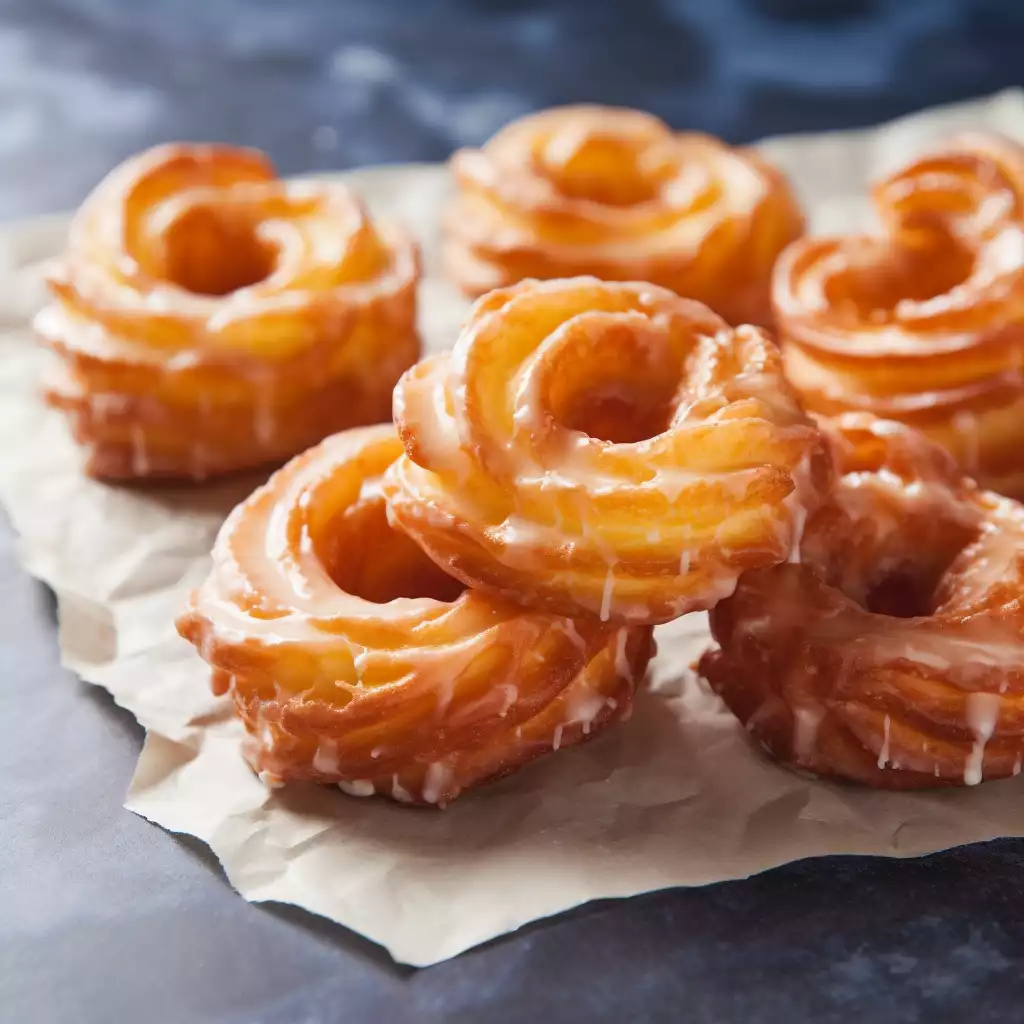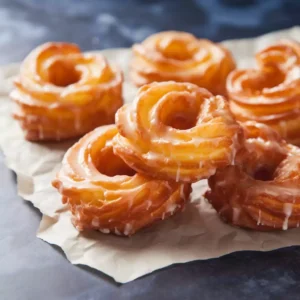
French Crullers are delicate and airy pastries that boast a delightful combination of rich flavors and a light, fluffy texture.
Originating from France, these elegant treats have earned a special place in the hearts of pastry enthusiasts worldwide.
Despite their sophisticated appearance, making French Crullers is surprisingly straightforward, making them an ideal choice for both novice and experienced bakers alike.
Crafted from simple ingredients like flour, butter, eggs, and sugar, French Crullers transform into golden, crispy delights when fried to perfection.
The dough, enriched with butter, creates a luxurious mouthfeel, while the addition of eggs lends a smooth and glossy texture. These ingredients work together harmoniously, resulting in a pastry that is both decadent and light.
Despite their elegant appearance, French Crullers are a delightfully simple treat to prepare, making them perfect for any occasion.
Whether served as a sweet indulgence with a cup of coffee or showcased as a stunning dessert at your next gathering, these pastries are sure to impress with their irresistible flavor and delicate charm
Expert Tip: Monitor the oil temperature carefully while frying to prevent the crullers from burning or becoming greasy.
All-Purpose Flour: Provides structure to the French Crullers and helps them achieve a light, airy texture.
Butter (Unsalted): Adds richness and flavor to the dough, resulting in a luxurious mouthfeel.
Water: Combines with the butter, sugar, and salt to form the base of the dough.
Sugar (Granulated): Sweetens the dough and adds a subtle hint of sweetness to the overall flavor.
Salt: Enhances the flavor of the dough and balances the sweetness.
Eggs: Contribute to the texture of the French Crullers, making them smooth and glossy.
Vegetable Oil: Used for frying the crullers until they are golden brown and crispy.
For the Glaze:
Icing Sugar: Forms the base of the glaze, providing sweetness and a smooth texture.
Milk: Helps achieve the desired consistency of the glaze.
Vanilla Extract: Adds flavor and aroma to the glaze, enhancing the overall taste of the French Crullers.
Expert Tip: Use a star-shaped piping tip to pipe the dough into decorative rings for a classic French Cruller appearance.
Expert Tip: Ensure all ingredients are at room temperature before preparing the dough to promote proper incorporation and consistent results.
Store any leftover French Crullers in an airtight container at room temperature for up to 2 days. For longer storage, you can freeze them in a freezer-safe container for up to 1 month. When ready to enjoy, simply thaw at room temperature and reheat in the oven for a few minutes until warmed through.
Yes, you can prepare the dough ahead of time and refrigerate it for up to 24 hours before frying. Allow the dough to come to room temperature before piping and frying the crullers.
Ensure that the oil is heated to the correct temperature before frying the crullers. If the oil is too hot, the crullers may brown too quickly without fully puffing up. If the oil is too cold, the crullers may absorb too much oil and become greasy. Additionally, make sure to pipe the dough into evenly sized rings to promote uniform cooking and puffing.
While traditionally fried, you can bake French Crullers in the oven for a lighter option. Pipe the dough onto a baking sheet lined with parchment paper and bake at 190°C (375°F) for 20-25 minutes or until golden brown and puffed.
To achieve the desired consistency of the glaze, start by adding a small amount of milk to the icing sugar and gradually increase until you reach your desired thickness. If the glaze becomes too runny, simply add more icing sugar until it thickens to your liking.
Here are some more recipes for you to enjoy! If you my recipes don’t forget to rate and leave a comment.
If you have any recipe suggestions, please do not hesitate to ask me. A great way to stay in contact with me is through Instagram, Facebook, Twitter and YouTube. Don’t forget to tag me @CookwithNabeela in your recipe photos!

Subscribe now to receive my latest recipes directly in your inbox. Stay up-to-date and never miss out!

I love to cook! I want to share with you my favourite, delicious family-friendly recipes. I want to inspire you to create fantastic food for your family every day.
Add your first comment to this post